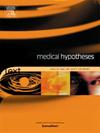补充肌酸作为系统性红斑狼疮肌肉减少症和免疫失调的双重治疗策略:一种假设驱动的方法
IF 2.1
4区 医学
Q3 MEDICINE, RESEARCH & EXPERIMENTAL
引用次数: 0
摘要
系统性红斑狼疮(SLE)是一种慢性自身免疫性疾病,其特征是严重的免疫失调,主要由toll样受体(TLR)信号异常和随后的I型和III型干扰素过量产生引起。激活的tlr有助于B细胞过度活跃、树突状细胞成熟和促炎T细胞亚群的扩增,从而使全身性炎症和组织损伤持续存在。同时,SLE患者经常出现肌肉减少症,骨骼肌质量和功能的逐渐丧失,导致身体虚弱,身体机能下降,发病率和死亡率增加。肌酸是ATP再生所必需的天然化合物,因其促肌酐作用而被广泛认可,并因其抗炎和免疫调节特性而越来越受到重视。最近的临床前证据表明,肌酸可能减弱tlr介导的信号传导并降低促炎细胞因子的表达。在这里,我们提出了一个双重作用假设,即肌酸补充SLE可能:(1)通过抑制TLR信号传导调节先天免疫激活,从而抑制I型和III型干扰素反应;(2)通过增强肌肉生物能量和减轻炎症诱导的分解代谢过程来对抗肌肉减少症。肌酸是一种可获得且耐受性良好的化合物,即使在相对较高的剂量下,这些机制的融合也可能恢复免疫稳态,保持肌肉功能,并改善SLE患者的长期临床结果。本文章由计算机程序翻译,如有差异,请以英文原文为准。
Creatine supplementation as a dual therapeutic strategy for sarcopenia and immune dysregulation in systemic lupus erythematosus: A hypothesis-driven approach
Systemic lupus erythematosus (SLE) is a chronic autoimmune disorder characterized by profound immune dysregulation, primarily driven by abnormal toll-like receptor (TLR) signalling and the subsequent overproduction of type I and III interferons. Activated TLRs contribute to B cell hyperactivity, dendritic cell maturation, and the expansion of proinflammatory T cell subsets, thereby perpetuating systemic inflammation and tissue damage. Concurrently, patients with SLE often develop sarcopenia, a progressive loss of skeletal muscle mass and function, leading to frailty, reduced physical performance, and increased morbidity and mortality.
Creatine, a naturally occurring compound essential for ATP regeneration, is widely recognized for its ergogenic effects and is increasingly appreciated for its anti-inflammatory and immunomodulatory properties. Recent preclinical evidence suggests that creatine may attenuate TLR-mediated signalling and reduce the expression of proinflammatory cytokines.
Here, we propose a dual-action hypothesis whereby creatine supplementation in SLE may: (1) modulate innate immune activation by inhibiting TLR signalling and, consequently, dampen type I and III interferon responses; and (2) counteract sarcopenia by enhancing muscle bioenergetics and mitigating inflammation-induced catabolic processes.
The convergence of these mechanisms—orchestrated by creatine, an accessible and well-tolerated compound even at relatively high doses—may restore immunological homeostasis, preserve muscle function, and improve long-term clinical outcomes in patients with SLE.
求助全文
通过发布文献求助,成功后即可免费获取论文全文。
去求助
来源期刊

Medical hypotheses
医学-医学:研究与实验
CiteScore
10.60
自引率
2.10%
发文量
167
审稿时长
60 days
期刊介绍:
Medical Hypotheses is a forum for ideas in medicine and related biomedical sciences. It will publish interesting and important theoretical papers that foster the diversity and debate upon which the scientific process thrives. The Aims and Scope of Medical Hypotheses are no different now from what was proposed by the founder of the journal, the late Dr David Horrobin. In his introduction to the first issue of the Journal, he asks ''what sorts of papers will be published in Medical Hypotheses? and goes on to answer ''Medical Hypotheses will publish papers which describe theories, ideas which have a great deal of observational support and some hypotheses where experimental support is yet fragmentary''. (Horrobin DF, 1975 Ideas in Biomedical Science: Reasons for the foundation of Medical Hypotheses. Medical Hypotheses Volume 1, Issue 1, January-February 1975, Pages 1-2.). Medical Hypotheses was therefore launched, and still exists today, to give novel, radical new ideas and speculations in medicine open-minded consideration, opening the field to radical hypotheses which would be rejected by most conventional journals. Papers in Medical Hypotheses take a standard scientific form in terms of style, structure and referencing. The journal therefore constitutes a bridge between cutting-edge theory and the mainstream of medical and scientific communication, which ideas must eventually enter if they are to be critiqued and tested against observations.
 求助内容:
求助内容: 应助结果提醒方式:
应助结果提醒方式:


